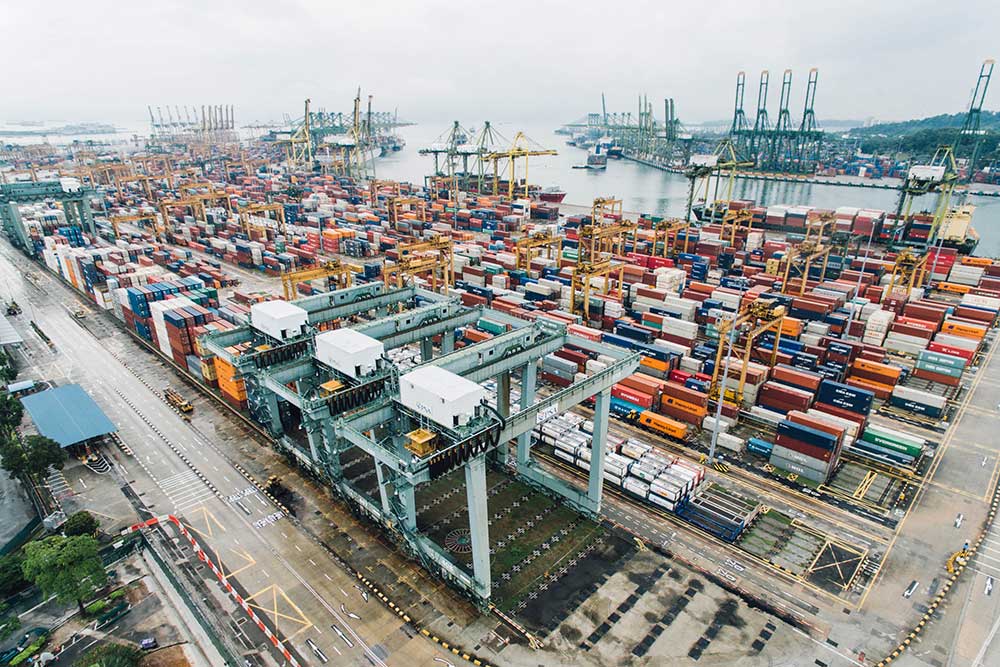Tips for trade amid volatility.

Retailers with seasonal inventory en route may not be able to pivot their orders to reflect changing demand.
By: Dan Fisher
This has been a year of change and turbulence for global trade. Widespread delays piled onto surges and shortages in demand, leaving exporters and importers alike readjusting and trying to adapt. Complicating matters further, each country is on a different timeline for recovery from the pandemic, which makes it difficult for global companies to plan for the year ahead.
By looking at the changes over the past few months, however, companies can begin to chart a path forward. Understanding the past disruptions and current volatility is crucial to evaluating shipping risk and navigating the new normal of global trade.
The current shipping delays are not due to a lack of shipping capacity, but rather a slowdown in manufacturing. At the beginning of the year, production ground to a halt in China. As the virus spread, production slowed in other key countries like South Korea and India as factories began to close, leading to widespread shipping delays.
These delays began as early as January but took months to ripple through the supply chain and directly impact consumers in most instances. This highlights another issue companies are facing: supply chains at this scale move slowly, meaning it is difficult for companies to adjust to radical changes in consumer demand. Clothing retailers with seasonal inventory on the way have little option to pivot to reflect the decreased consumer demand, and manufacturers of hot-ticket items like toilet paper were unable to quickly shift to accommodate surging interest in their products.
Perhaps the biggest disruption in shipping has been the increase of risk in trade. Exporter and importers alike need to evaluate country risk, bank risk and counterparty risk when looking at overseas trades. Countries that were previously highly-rated and low-risk trading partners have become volatile as the pandemic disrupts their economies, and massive bank consolidation has made it more difficult to find partner banks to underwrite letters of credit. Turkey, for instance, has gone from seven banks to just two. Even counterparty risk has increased, as previously reliable companies struggle to readjust to the pandemic economy.
For companies operating in this environment, the key will be to try to reduce risk wherever possible. Look at all trade agreements closely to evaluate them for risk.
First, look at the country risk. Are there multiple countries involved, or just one? With each added country involved, the risk of something unexpected impacting the shipment increases. Companies should have a list of countries that they feel comfortable taking a risk on. Look into the credit cover available for each country through ECAs and insurance, and look at the bank ratings for different countries to help build a strong list.
Next, evaluate the financial partners involved. With smaller, less reliable banks, there will be higher degrees of bank risk. Try to find a partner with an established track record and good reputation.
Finally, try to mitigate counterparty risk. Letters of credit can help lower the risk to both parties, and there has been an uptick in interest in them in the current environment. Traditionally, letters of credit were leveraged primarily with new trade relationships, but now it might make sense to use them even with established trading partners to help hedge the increased volatility and provide more assurance to both partners. The slower shipping times are also creating the need for extended letters of credit, so companies may need to talk with their financial institutions about changing the terms of their letters of credit.
In addition to trying to mitigate short-term risk, companies should look into longer term adjustments and solutions for their supply chains. Diversify wherever possible to reduce dependency on one trade partner, and try to keep some degree of inventory close at hand in case of sudden surges in demand or delays in production. Shortening the supply chain can further help provide increased stability during uncertain times.
Trade is far from immune to coronavirus, but the industry is adapting rapidly. By building strong trade relationships with overseas partners and financial institutions, companies will be able to weather the current storm. Still, the past few months will have a lasting impact on trade in the years ahead. Companies who have not already done so should look to diversify their supply chains to protect from future disruptions.
By having a deep understanding of the different layers of risk in each shipment, companies can better prepare and position themselves. They should work closely with their financial institutions and counterparties to tighten their supply chains and safeguard themselves in the months ahead.

Dan Fisher
Dan Fisher
Dan Fisher is the Head of Global Trade Finance at TD Bank, America’s Most Convenient Bank. He has nearly four decades of experience in global trade working in Asia, Europe and North America.
Contact: Dan.Fisher@td.com
In this episode, I sat down with Beejan Giga, Director | Partner and Caleb Emerson, Senior Results Manager at Carpedia International. We discussed the insights behind their recent Industry Today article, “Thinking Three Moves Ahead” and together we explored how manufacturers can plan more strategically, align with their suppliers, and build the operational discipline needed to support intentional, sustainable growth. It was a conversation packed with practical perspectives on navigating a fast-changing industry landscape.